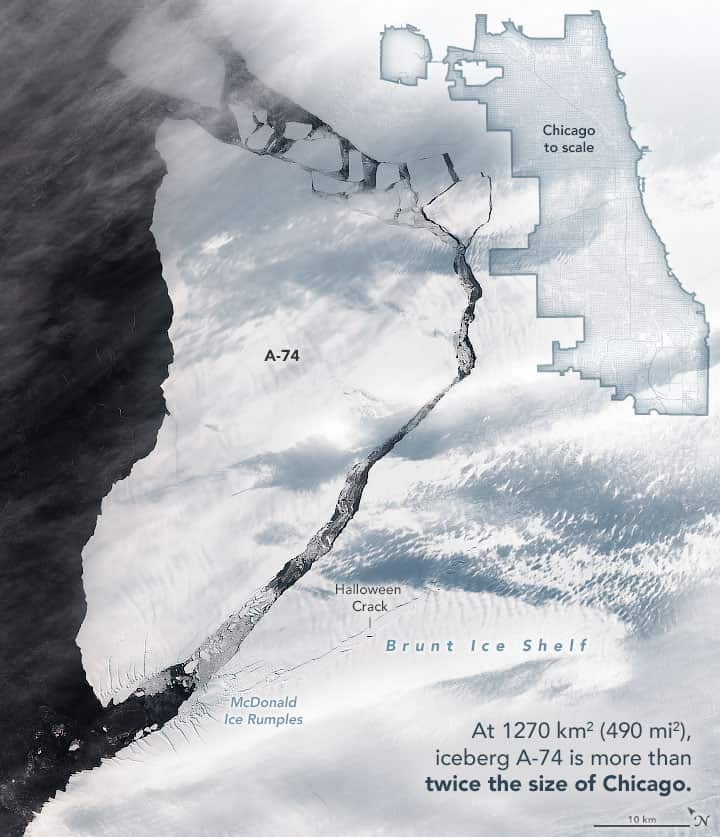
This post first appeared on NASA’s Earth Observatory Site
Antarctica’s Brunt Ice Shelf finally calved a large iceberg in February 2021, two years after rifts opened rapidly across the ice and raised concerns about the shelf’s stability.
The break was first detected by GPS equipment on February 26, 2021, and then confirmed the next day with radar images from the European Space Agency’s Sentinel-1A satellite. On March 1, clouds were sparse enough for the Operational Land Imager (OLI) on Landsat 8 to acquire this natural-color image of the new iceberg.
Named A-74, the berg spans about 1270 square kilometers (490 square miles), or about twice the size of Chicago. That’s a large piece of ice for the Brunt Ice Shelf, but Antarctica is known for churning out some enormous bergs. For comparison, Iceberg A-68 was almost five times that size when it calved from the Larsen C Ice Shelf in 2017.
A-74 broke from the ice shelf northeast of the McDonald Ice Rumples—an area where the flow of ice is impeded by an underwater formation that causes pressure waves, crevasses, and rifts to form at the surface. The rift that spawned the new berg appeared near the rumples in satellite images in September 2019, and it advanced across the ice shelf with remarkable speed during the austral summer of 2020-2021.
“I would not have thought that this rift could go zipping across the northeast side of the Brunt Ice Shelf and cause a significant calving—all in a tiny fraction of the time it has taken Chasm 1 to extend toward the ice rumples from the south.”
– Christopher Shuman, a University of Maryland, Baltimore County, glaciologist based at NASA’s Goddard Space Flight Center.
Chasm 1 is a separate rift located south of the ice rumples and the Halloween Crack. After decades of growth and then a rapid acceleration in 2019, that rift appeared poised to spawn its own iceberg, prompting safety concerns for researchers “upstream” at the British Antarctic Survey’s Halley VI Research Station. This section of the shelf is still holding on, but when it eventually breaks the berg will likely measure about 1700 square kilometers (660 square miles).
Scientists are waiting to see how the complex structure responds to the recent calving.
“The Halloween Crack may or may not be the first to respond. We’ll be closely watching that pinning point for changes to the larger Brunt Ice Shelf remnant.”
– Christopher Shuman
It also remains to be seen what will become of the new iceberg. Most likely, it will eventually get caught up in the Weddell Gyre—similar to the fate of A-68. But first, it needs to be pushed offshore, and to date, it does not appear to have moved very far.